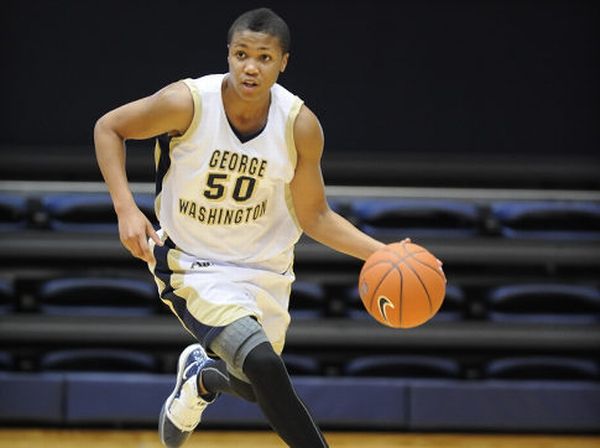“SPREAD OUT!” their coach shouts encouragingly, turning away from the players to share her laughter with the moms and dads on the sideline. There might be something more adorable than six year-olds playing soccer, but I don’t know what it is.


At this age, girls and boys are pretty much the same: they wear matching jerseys and socks, and run after the ball with identical tireless enthusiasm. On the field, the red team moves en masse toward the blue team’s goal, and when a kid out in front stumbles and falls, they all do.
Their game may need work, but their concept of team is perfect.
All of this will change in another few years. As puberty hits, the boys will be funneled into programs with funding, and the girls will be encouraged to take up tetherball. Even those girls who will be able to find organizational support in quality training camps, sponsorships, and athletic scholarships will only be able to achieve the top of their sport in the women’s division.
And that’s just the way sports are. It’s how things have always been done, and how things might have gone on indefinitely if it weren’t for the advancements in culture and science that have led to the recognition of a growing number of transgender athletes.
The term “transgender” should not be confused with homosexuality, transvestitism or transsexuality, although these things may not be mutually exclusive. As explained in On the Team: Equal Opportunity for Transgender Athletes, the term transgender describes “an individual whose gender identity (one’s internal psychological identification as a boy/man or girl/woman) does not match the person’s sex at birth.”
“I’m not ready to advocate for an end to female athletics,” says Dr. Pat Griffin to the crowd assembled in Grand Ballroom C. The room is packed. My tablemates are the same folks with whom I participated in the morning workshop on homophobia and sports, plus a few newcomers. This workshop and the morning session are part of the Outgames Human Rights Conference which took place during the 2nd GLISA North America Outgames in Vancouver, B.C. this July.
“But somehow,” Griffin continues, “we need to make sure that transgender athletes are included in sports. That’s the most important thing.”
Until recently, the existence of transgender athletes was largely ignored, although the concept of “sex-testing” is nothing new. South African runner Caster Semenya is the most high-profile case in recent history; her sex was questioned (and “tested”) after she finished the 800-meter 2009 world championship in Berlin two seconds faster than her nearest opponent. Look at Chinese basketball player Yao Ming, who stands 7”6’, to see the difference between how we receive the extraordinary in male and female athletes.
Caster Semenya is not transgender (though she may be intersex), but triathlete Chris Mosier is, and golfer Lana Lawless is, and college basketballer Kye Allums is–and so are an increasing number of young people, many of whom want to play sports, and it’s the job of those of us in Grand Ballroom C to think about a way to make sure that happens.
“Well, what about policy?” The speaker is from my table, a woman who appears to be in her mid-60s and has the telltale tan of a person whose life is spent on the field. She’d been a policy advocate in the morning session, too, and with good reason: There’s nothing in sport more essential than the concept of fairness.
It’s the reason why we segregate our athletes in the first place. Transgender athletes – or at least female-to-male (FTM) athletes who wish to undergo hormonal treatment and/or sex reassignment surgery (SRS) – blow out the paradigm. Testosterone, the principal male sex hormone necessary for transitioning, is a banned substance.
“This is a step in the right direction,” Dr. Griffin responds, pointing to a copy of the report she’s prepared with co-presenter Helen J. Carroll. The document contains three key points for dealing with the biological nuts and bolts: SRS is not appropriate for athletes under 18 years old; male-to-female (MTF) athletes must complete one year of hormone therapy before placement on a women’s team; and FTM athletes cannot compete on women’s teams effective with beginning hormone treatment.
That sounds fair, but what about transgender athletes who don’t choose hormone treatment or surgery?
An image of George Washington University transgender basketballer Kye Allums is projected on the screen. He’s broad-shouldered, handsome, and fit. During his basketball career, Allums chose to “socially transition”, to present as a man through his hair, dress, pronoun use and other signifiers, but to forego hormone treatment or surgery.
After his social transition, he played a season while still on the GWU women’s basketball team. In 2011, he retired, and the GWU athletics department issued a statement explaining that Allums had “[d]ecided that it is in his best interest to no longer participate in intercollegiate athletics.” (By all accounts the GWU administration was supportive of Allums.)
“Inclusion is key,” says Carroll. “This is uncharted territory, and you will make mistakes, but the idea is to make sure transgender student athletes get to play.” Judging from the heads nodding around my table, the message has been received.